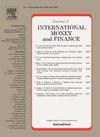Exchange rate forecasting with macroeconomic data: Evidence from a novel comprehensive ensemble approach
IF 3.3
2区 经济学
Q2 BUSINESS, FINANCE
引用次数: 0
Abstract
The foreign exchange market operates as a high-dimensional, dynamic, and complex system influenced by multiple factors and their interrelations. In this paper, we propose a comprehensive ensemble framework for exchange rate forecasting that effectively captures the intricate fluctuation patterns inherent in exchange rate data. Our framework integrates economic theories, technical indicators, and other relevant factors to enhance predictive accuracy. To achieve this, we first decompose the exchange rate time series using ensemble empirical mode decomposition with adaptive noise (CEEMDAN). The resulting components are then segmented into high- and low-frequency groups using the Wilcoxon rank test. Based on macroeconomic fundamentals and technical indicators, we select predictive variables to be included in the model. Next, we conduct comparative experiments to verify the role of export and import (EI) data in exchange rate forecasting. We employ the time convolutional network (TCN) model to predict four important exchange rate time series. The empirical results—validated across forecasting horizons of 1, 3, and 6 months—consistently demonstrate that the proposed method outperforms benchmark models, offering a more accurate and reliable framework for exchange rate predictions. These findings underscore the robustness and predictive power of our approach, confirming its effectiveness in anticipating fluctuations in exchange rates over different time scales. The results highlight the strong correlation between exchange rates, macroeconomic conditions, and investment transactions. Moreover, the comparative experiments reveal that the inclusion of EI data significantly improves the prediction accuracy of the model, emphasizing the importance of this factor in exchange rate forecasting.
基于宏观经济数据的汇率预测:来自一种新的综合集成方法的证据
外汇市场是一个高维、动态、复杂的系统,受多种因素及其相互关系的影响。在本文中,我们提出了一个全面的集成框架的汇率预测,有效地捕捉复杂的波动模式固有的汇率数据。我们的框架整合了经济理论、技术指标和其他相关因素,以提高预测的准确性。为了实现这一点,我们首先使用自适应噪声集成经验模式分解(CEEMDAN)分解汇率时间序列。然后使用Wilcoxon秩检验将所得成分分为高频组和低频组。根据宏观经济基本面和技术指标,选择预测变量纳入模型。接下来,我们通过对比实验验证进出口(EI)数据在汇率预测中的作用。我们使用时间卷积网络(TCN)模型来预测四个重要的汇率时间序列。在1个月、3个月和6个月的预测范围内验证的实证结果一致表明,所提出的方法优于基准模型,为汇率预测提供了更准确、更可靠的框架。这些发现强调了我们的方法的稳健性和预测能力,证实了它在预测不同时间尺度上汇率波动的有效性。研究结果突出表明,汇率、宏观经济状况和投资交易之间存在很强的相关性。此外,对比实验表明,EI数据的加入显著提高了模型的预测精度,强调了EI因素在汇率预测中的重要性。
本文章由计算机程序翻译,如有差异,请以英文原文为准。
求助全文
约1分钟内获得全文
求助全文
来源期刊

Journal of International Money and Finance
BUSINESS, FINANCE-
CiteScore
4.20
自引率
4.00%
发文量
141
期刊介绍:
Since its launch in 1982, Journal of International Money and Finance has built up a solid reputation as a high quality scholarly journal devoted to theoretical and empirical research in the fields of international monetary economics, international finance, and the rapidly developing overlap area between the two. Researchers in these areas, and financial market professionals too, pay attention to the articles that the journal publishes. Authors published in the journal are in the forefront of scholarly research on exchange rate behaviour, foreign exchange options, international capital markets, international monetary and fiscal policy, international transmission and related questions.
 求助内容:
求助内容: 应助结果提醒方式:
应助结果提醒方式:


